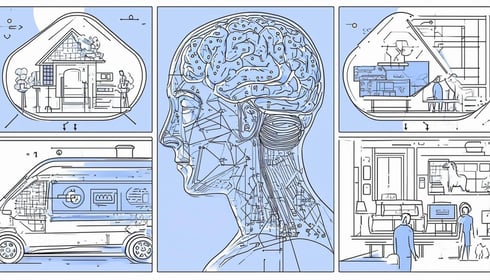Have a Question?
Get in Touch
In today’s world, most AI developers build AI solutions that target broad use cases for large markets, excluding the smaller or niche markets. The primary reason for this is twofold; the high cost and time required for developing AI models, and secondly, investors have shown, unsurprisingly, more interest in markets that are easy to target and worth billions.
At Kami Vision, we aim to change this and develop AI models for smaller to medium businesses, and extend the benefits of AI to everyone. This blog post discusses the approach we take to identify and develop AI models for niche use cases.
Understand the market and exact application
Identifying the opportunity is always crucial, and as expert AI developers, we begin designing an AI-based model by understanding the market and requirements of the business. The idea here is to understand the market and exact problem before attempting to decode it.
After identifying the opportunity and understanding the market, we reshape this knowledge and define the business problem. After which, we set clear business objectives and formulate a strategy for building the model.
Break it down into smaller chunks
Having defined the objectives and devised the strategy, we then set about breaking down the project into smaller chunks, leading to an actionable plan that helps prevent potential pitfalls later.
Some of the critical questions to answer here include the following:
- What’s the specific business objective that requires a cognitive solution?
- What are some of the defined success criteria for this project?
- What are some of the acceptable parameters for precision, accuracy, and confusion matrix values?
- What are the expected inputs to the AI model along with expected outputs?
Select the correct model
This phase requires steps such as model technique selection and application, model training, model validation, algorithm selection, ensemble model development, testing, and model optimization.
To achieve this, the following actions are required:
- Selecting the right algorithm depending on the learning objective and data requirements
- Identifying the features that offer the best results
- Determining whether model explainability or interpretability is required
- Developing ensemble models for better performance
- Testing different model versions for optimal performance
- Identifying various requirements for the operation and deployment of the model.
Working on data requirement
Once the model is selected, the next step is to identify the data. An AI model is primarily generated by learning from specific data and applying that understanding to new data. The data here needs to be in good shape.
Among the steps here involves data identification, data collection, and data insights. Since the importance of data is enormous in an AI model, the main focus of this step is to manage the quality and quantity of data.
Closing the gap between development and reality
From an AI perspective, closing the gap between development and reality includes:
- Model metric evaluation.
- KPIs.
- Model quality measurements.
- Model performance metrics.
- A final determination of whether the AI model can meet the established business goals for the niche use cases.
Closely working with partners who operate in different verticals
At the last stage, AI developers work closely with partners operating in different verticals. For instance, at Kami Vision, we specifically work with partners that provide security systems and enhance their video security services.
Since these security companies work with their customers in a range of verticals and use cases, our approach is to keep it in mind and design our product roadmap based on this.
Today’s market is full of wide-ranging AI models for predictive analysis, hyper-personalization, speech recognition, and human recognition. However, most of these AI models are too broad, very generic, and risk being inaccurate. To increase the precision and accuracy of AI models and make them usable by a broader range of audiences/organizations, the need is to develop powerful AI models designed for niche use cases.
Although the cost of developing such niche models and introducing them to the market is high, Kami Vision aims to find ways and resources to overcome this barrier to build robust models specifically for safety and security use cases.

